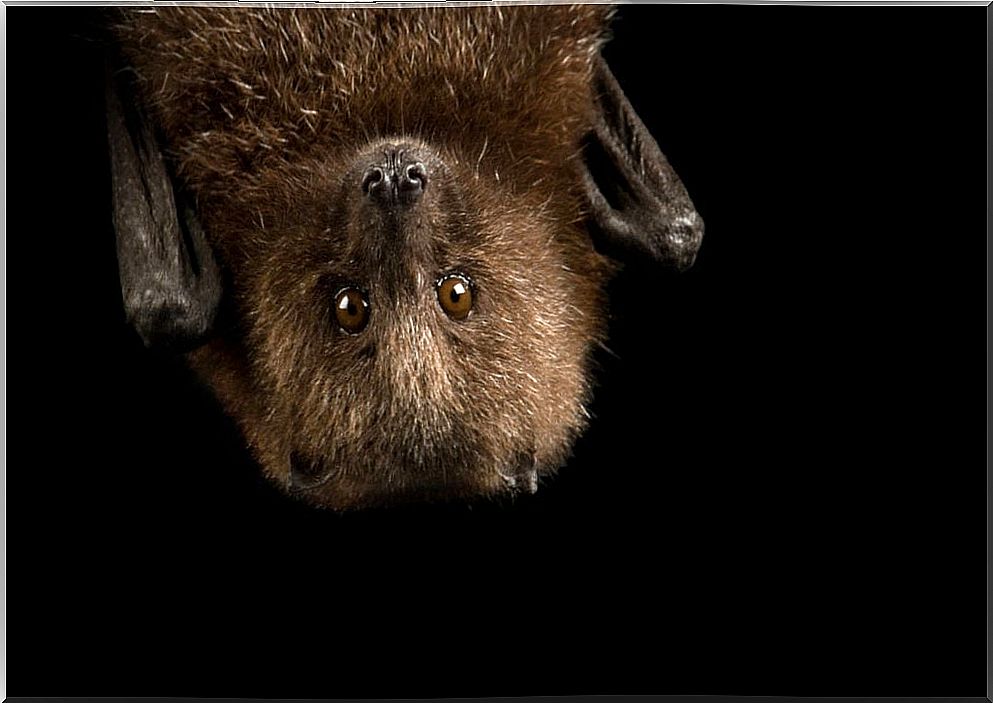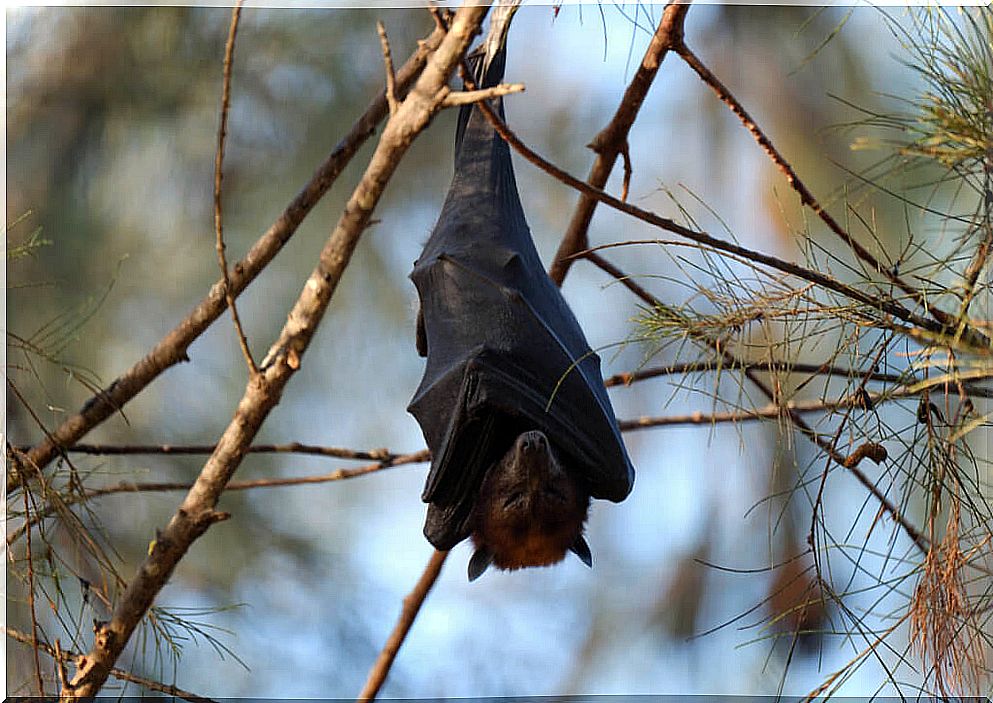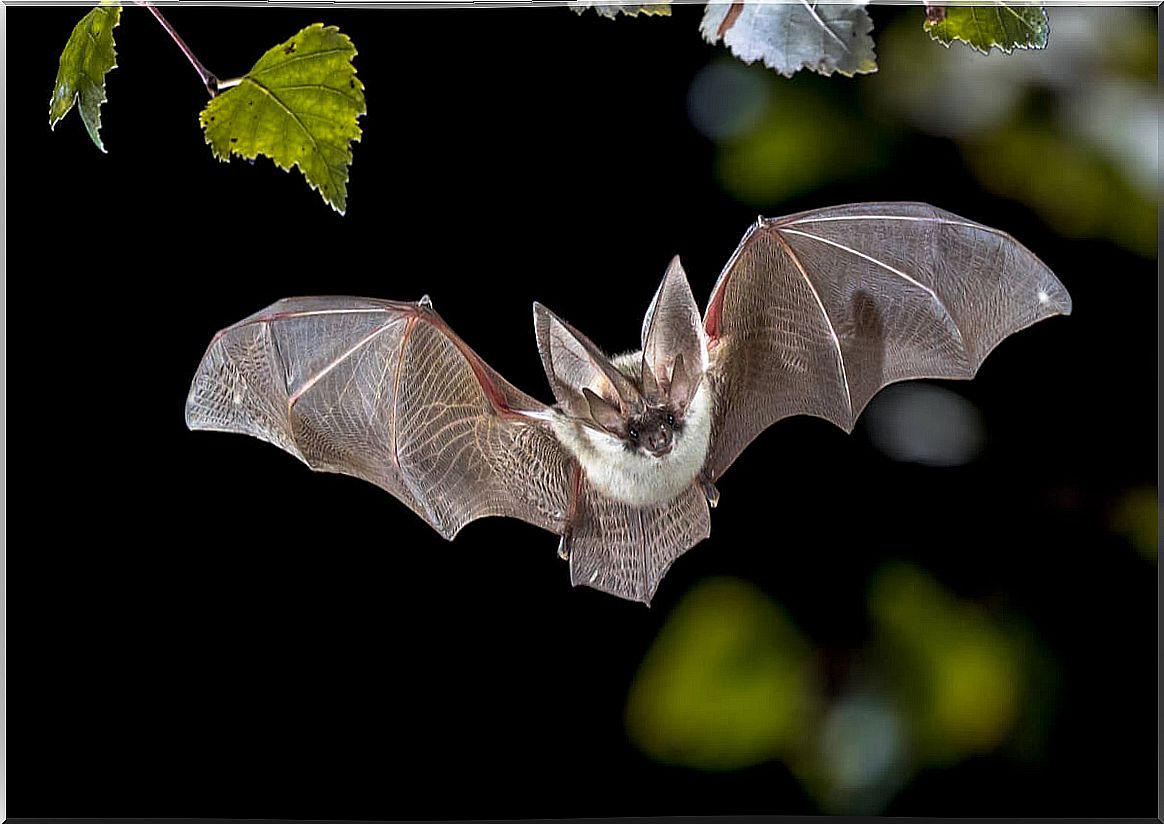9 Facts About Bats

Inhabitants of the night, these mammals are protagonists of myths and legends that, unfortunately, do not favor them very much. Next, you can learn facts about bats that will make you fall in love with them.
There are more than 1,300 species of bats spread across 6 continents. These animals are so numerous that they represent one-fifth of the Earth’s mammal population, which is not surprising since their role for the ecosystem is irreplaceable.
Around bats orbit a large number of false beliefs that add to their bad reputation. In this article, you will get to know your true nature revealed through amazing facts and trivia.
Curiosities about bats
Bats are divided into 2 types based on their size: fruit bats ( Pteropodidae ) and microbats ( Microchiroptera ). Other experts divide them according to their diet, separating them into nectarivores, insectivores, carnivores, frugivores and hematophagous.
Each species has a series of characteristics according to its habitat and needs. So what applies to some bats does not apply to others. Here are some examples of this in the form of trivia.

1. It is the only mammal that can fly
The bat is the only mammal that flies. Others, like flying squirrels, simply glide thanks to the membrane they have between their legs. The bats have adapted their forelimbs to be able to take off by flapping their wings, even though they have membranes instead of feathers.
2. Echolocation
One of the curiosities about bats that you should know is that they are able to obtain a spatial representation of their environment through the echoes of the ultrasounds they emit. This is called echolocation and is also found in other animals such as dolphins and whales.
3. They can eat up to 1200 mosquitoes per hour
Thanks to insectivorous bats, there are no insect pests. They are usually small and have a very fast metabolism, so they need to consume the equivalent of their insect weight every night.
4. Some species overwinter
In winter, when food is scarce in some regions, bats rest in caves for months. During this hibernation, your heart rate and metabolism slow to a minimum to survive without expending too much energy.
A notable example is that of Murina ussuriensis, a Japanese bat that hibernates in small burrows made under snowdrifts. Keeping its body temperature just above the frozen environment, it takes advantage of the insulation that frozen water provides, as if it were an igloo.
5. Not everyone sucks blood
There is a popular belief that all bats feed on blood. In fact, the only three that maintain a blood-sucking diet are the vampire bat (Desmodus rotundus ), the hairy-legged vampire bat ( Diphylla ecaudata ) and the white-winged vampire bat ( Diaemus youngi ).
6. The biggest bat
Although in cities and human settlements it is common to see small bats hovering around clouds of insects, some species are actually gigantic.
The biggest of them is the Filipino golden bat ( Acerodon jubatus ), with a wingspan of one and a half meters. This flying fox feeds exclusively on fruit and is in danger of extinction due to intensive hunting.
7. And the smallest
At the other extreme, we can find the smallest bat of all, the kitti-pig-nosed bat ( Craseonycteris thonglongyai ). This mammal barely reaches 3 centimeters in wingspan and 2 grams in weight.
8. They are not blind
This is another widespread myth. Because they are nocturnal animals, it was thought that their eyes had atrophied throughout their evolution, but this is not true. Although they are mainly oriented by echolocation, some of them need the vision to find their food, especially those who eat fruit.

9. Your droppings are wonderful for crops
The last curiosity about bats has to do with their waste. Its feces, known as ‘guano’, are one of the richest fertilizers on the planet, and there was a time when they cost a lot in markets.
They act as a fertilizer, soil purifier, fungicide, nematicide and fertilizer activator. In addition, the guano of insectivorous bats is high in nitrogen, and that of frugivores is rich in phosphorus.
Did you know all this information? Bats may not be the cutest creatures in the world, but they are full of surprises and their ecosystem value is incalculable. From pollination to invertebrate pest control, it is clear that the planet cannot exist without bats or humans.









